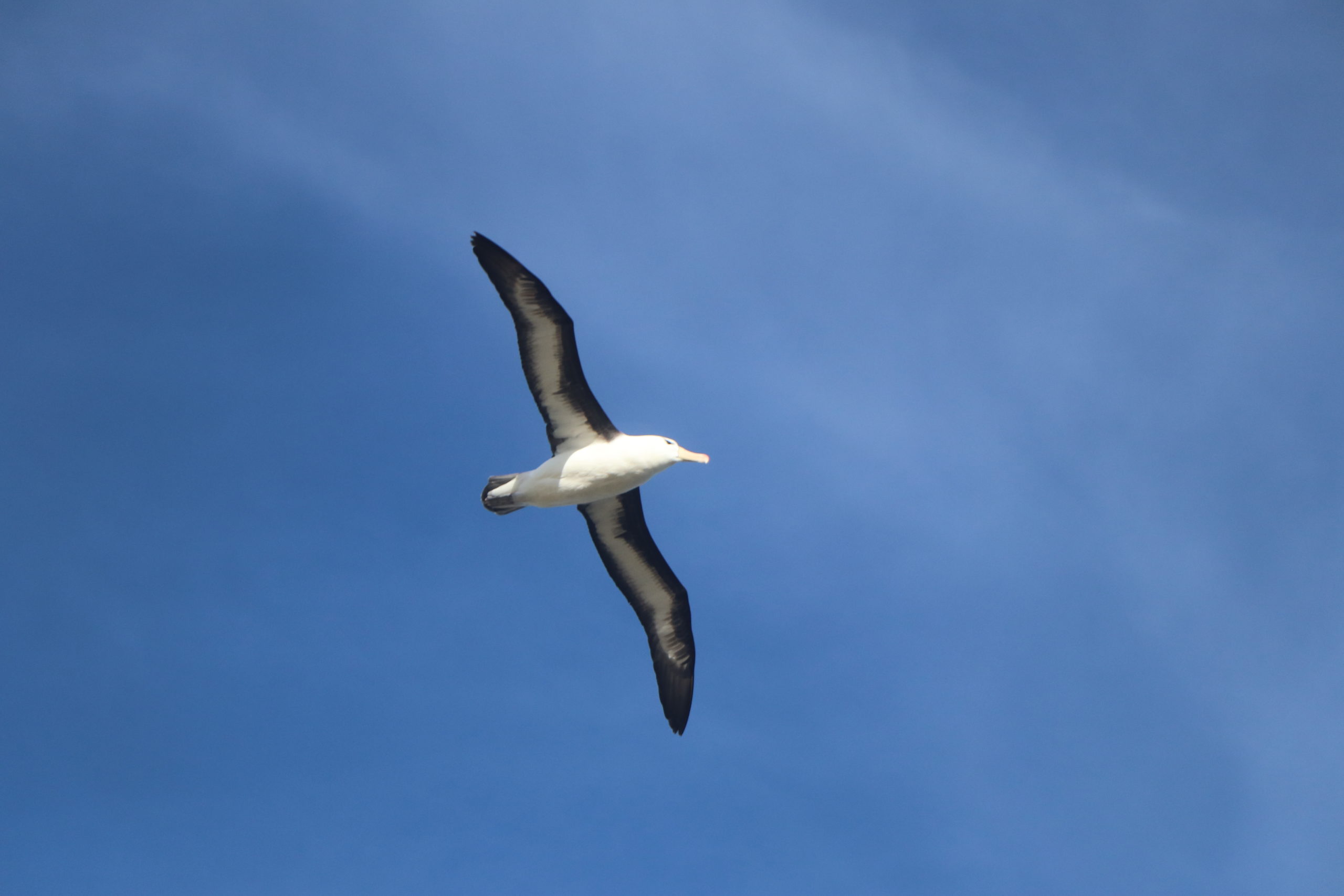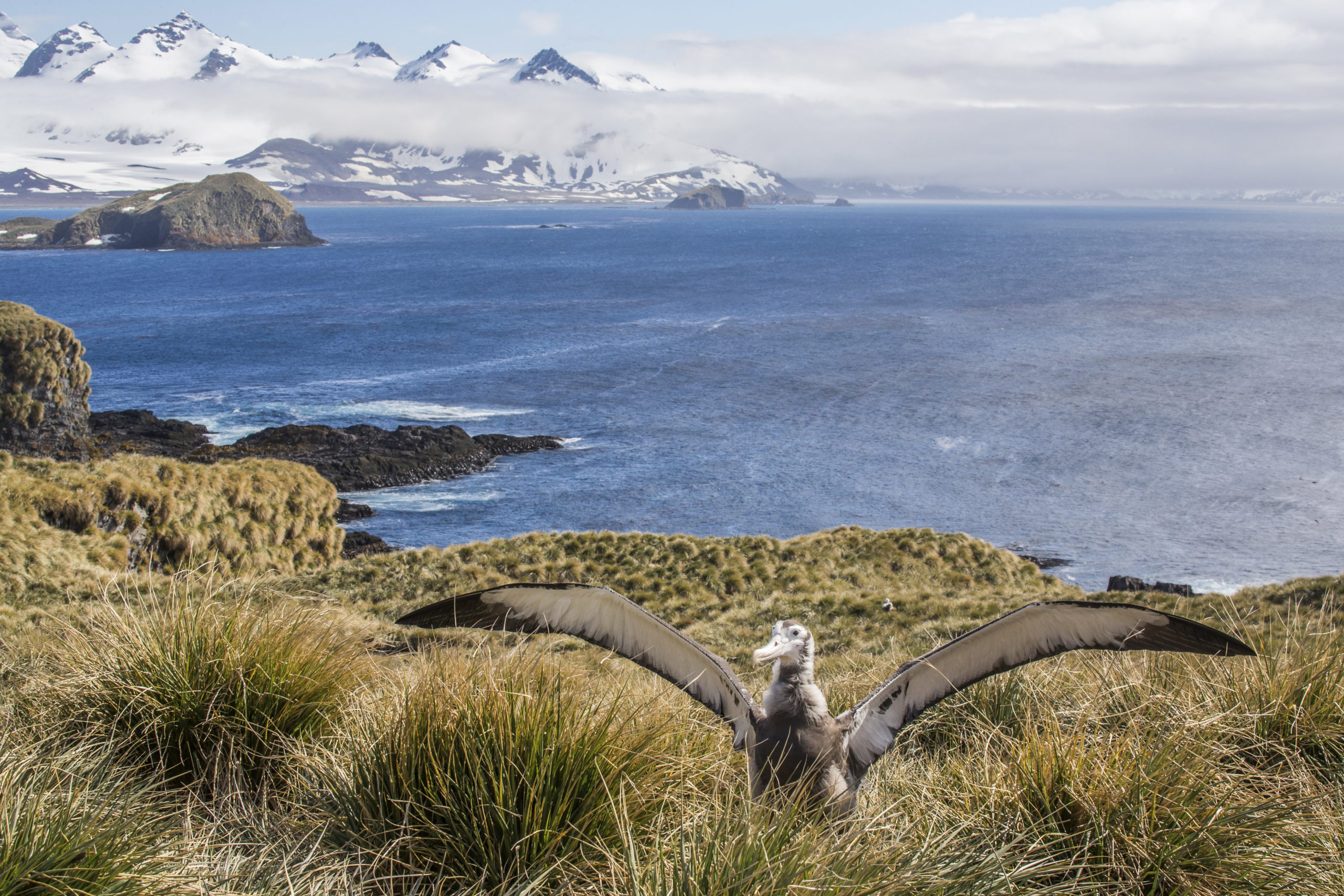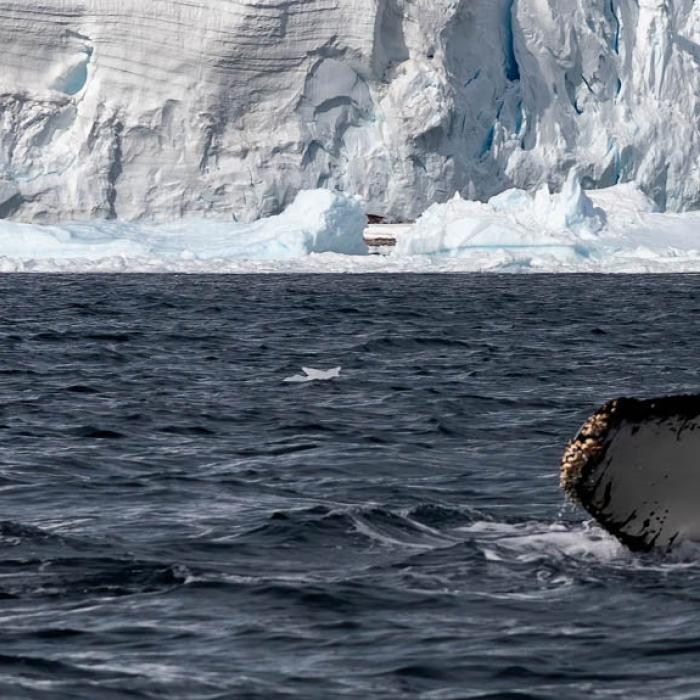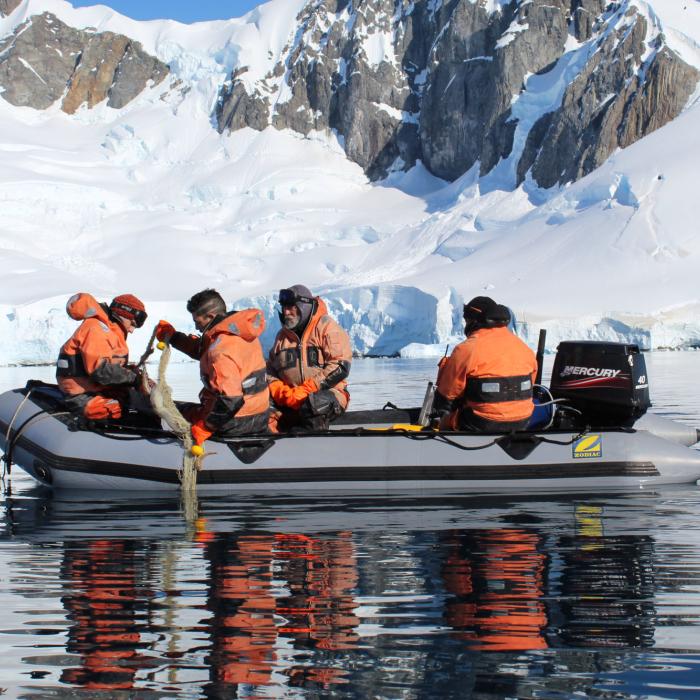
World Albatross Day is the epitome of Antarctic Ambassadorship, inspiring global collaboration to save these iconic birds
For the majority of people travelling to Antarctica or the sub-Antarctic, the spectacle of albatrosses and petrels soaring behind expedition vessels signals the approach of a whole new world.
It shaped my first journey to the region as a biologist over 20 years ago, adding to my excitement, but also drawing me out on deck to gaze and reflect for hours when weather and seas allowed. I was in awe of the wandering albatross, a true giant that can lock its astonishingly long wings and glide for hundreds of miles a day with scarcely a flap.
Even seasoned travellers never fail to marvel at the grace and beauty of these birds as they glide between often-thunderous Southern Ocean waves.
The albatross evokes mystery and wonderment, inspiring discussions about conservation, poetry, history, invasive species, climate change and more. So, the importance of a day dedicated to these magnificent creatures and the conservation crisis they face cannot be overstated.
Last year the Agreement on the Conservation of Albatrosses and Petrels’ (ACAP) Advisory Committee declared that a conservation crisis continues to be faced by its 31 listed species, with thousands of albatrosses, petrels and shearwaters dying every year. From that declaration, the ACAP inaugural World Albatross Day was born, set to launch on June 19 and held annually thereafter.  We celebrated ACAP’s announcement because World Albatross Day, or #WAD2020 for those looking to join the conversation on social media, resonates with IAATO, a community with a deep affection for the Southern Ocean and the creatures that rely upon it.
We celebrated ACAP’s announcement because World Albatross Day, or #WAD2020 for those looking to join the conversation on social media, resonates with IAATO, a community with a deep affection for the Southern Ocean and the creatures that rely upon it.
Visiting Antarctica, the sub-Antarctic or any unique wilderness is a great privilege that comes with a shared responsibility to do so softly and with minimal impact. IAATO’s extensive operational procedures are shaped by obligations and desire to protect the places we visit. They are continually reviewed and updated, often in collaboration with external experts and governments. A priority is ensuring that our activities do not inadvertently introduce disease or invasive species, a subject behind the theme for this year’s World Albatross Day; eradicating island pests.
Chosen to highlight the threats albatrosses and petrels can face on their breeding islands around the world from introduced rodents, cats and pigs, this theme also recognizes the efforts to eliminate the introduced killer house mice that have taken to attacking and killing breeding albatrosses and their chicks on Gough Island, approximately 400 km south-east of Tristan da Cunha in the South Atlantic Ocean and Midway Island, one the USA’s North-western Hawaiian Islands*
IAATO members acted to support the successful eradication of mice and rats from South Georgia (Islas Georgias del Sur)**, the world’s biggest project to remove invasive species to date, with South Georgia declared officially rat-free in 2018. But work to keep the islands safe is ongoing. Preventing the introduction of pests from vessels or visitors requires following robust protocols that are a rite of passage for anyone travelling to Antarctica or the sub-Antarctic. We remain alert and responsive to what else we can do to reduce the risk further.  Many IAATO operators also harness the power of citizen science to conduct seabird surveys, raise money for albatross conservation, carry researchers to remote field sites for censuses and financially support activities developed by ACAP.
Many IAATO operators also harness the power of citizen science to conduct seabird surveys, raise money for albatross conservation, carry researchers to remote field sites for censuses and financially support activities developed by ACAP.
But I feel there is something simple in all of us that drives this vital work, embodied for me by an encounter with one particular wandering albatross a few years ago. Somewhere in the Drake Passage on our way to the Antarctic Peninsula, it joined the ship for several hours, choosing to swoop forward repeatedly over a small group of us gathered on deck. Just out of reach, it cocked its head to look down at us as we gazed back, big goofy smiles on upturned, enchanted faces.
We therefore embrace the arrival of World Albatross Day this year, upholding it as the epitome of Antarctic ambassadorship and inspiration to foster global collaboration to save these iconic birds.
*Both projects are currently postponed due to COVID-19.
**A dispute exists between the Governments of Argentina and the United Kingdom of Great Britain and Northern Ireland concerning sovereignty over the Falkland Islands (Islas Malvinas), South Georgia and the South Sandwich Islands (Islas Georgias del Sur y Islas Sandwich del Sur) and the surrounding maritime areas.
Head to the ACAP website for more information on World Albatross Day and how you can get involved.
About the author | Amanda Lynnes, IAATO Director of Environment & Science Coordination
 Amanda’s role is to support IAATO in meeting environmental obligations arising from its mission, the Antarctic Treaty System and other international agreements. This includes coordinating research and monitoring efforts and citizen science.
Amanda’s role is to support IAATO in meeting environmental obligations arising from its mission, the Antarctic Treaty System and other international agreements. This includes coordinating research and monitoring efforts and citizen science.
Her Antarctic career began in 1996 with the British Antarctic Survey (BAS) as a penguin biologist and field assistant for the Commission for the Conservation of Antarctic Marine Living Resources (CCAMLR). She established long-term seabird monitoring projects at Signy Island, South Orkney Islands, and at Port Lockroy on the Antarctic Peninsula.
She was first introduced to IAATO in 2002 while working at Port Lockroy. Impressed by IAATO’s ethos, core values and potential for creating Antarctic ambassadors, she went on to work for an IAATO member operator and eventually the Secretariat in 2013. Her experiences have led her to appreciate the value of polar tourism when it is expertly managed. She believes protecting our wild places depends on giving people opportunities to learn while exploring them first hand.


